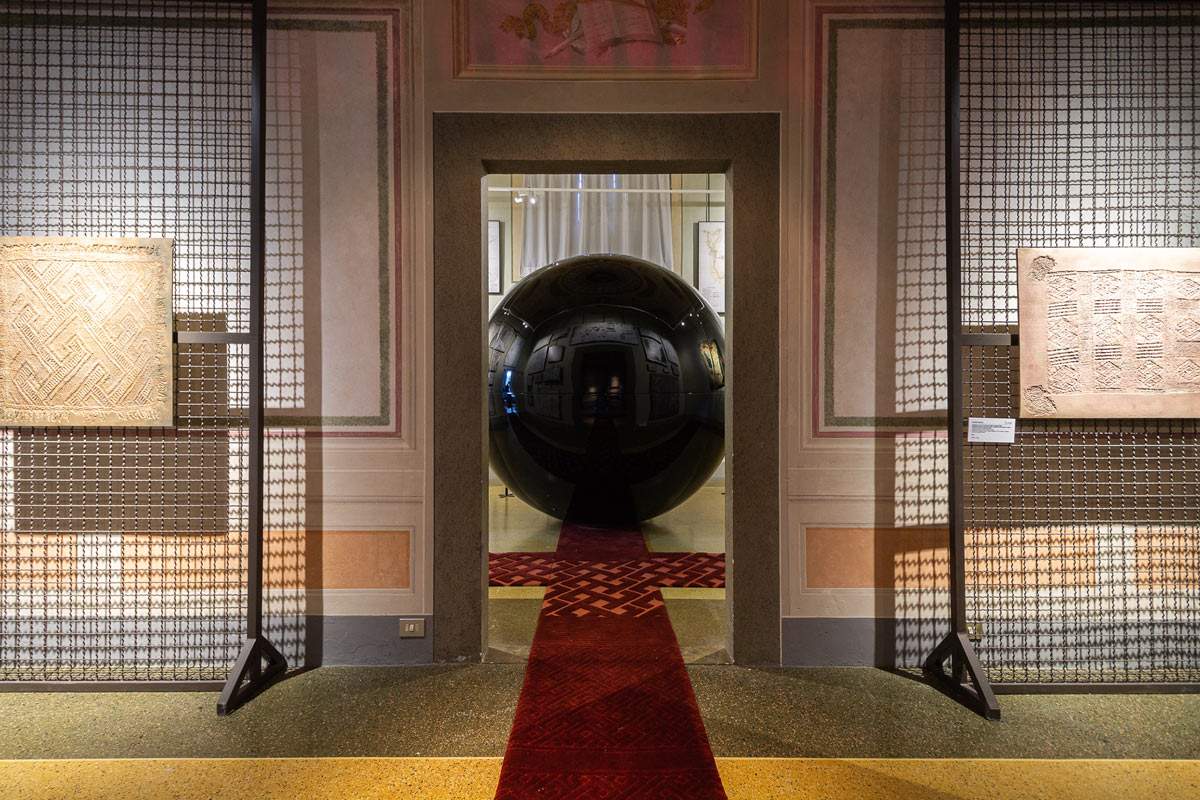Starting April 26, the Congo arrives in Florence: theAndito degli Angiolini in Palazzo Pitti will in fact host the first exhibition in Italy of Sammy Baloji (Lubumbashi, 1978), a leading figure in contemporary African art: historic Congolese objects from Florentine collections and other museums dialogue with the artist’s works in a site-specific exhibition entitled K(C)ongo, Fragments of Interlaced Dialogues. Subversive Classifications. The exhibition project, curated by Lucrezia Cippitelli, Chiara Toti and the BHMF collective, is the culmination of a research project initiated by the artist since 2016 in the collections of several museums around the world, including the Medici palace. In the exhibition-enriched by the production of two new site-specific works for the rooms of the Andito degli Angiolini, Palazzo Pitti-weave motifs and narratives drawn from objects that arrived from the Kongo Kingdoms (today’s Democratic Republic of Congo, Republic of Congo and Angola) starting in the 16th century, now housed in Palazzo Pitti and various museums.
Indeed, the artist’s works dialogue with archival material and important works from the Kongo on loan from the Museum of Anthropology and Ethnology in Florence and the Museum of Civilizations in Rome as well as the Uffizi Galleries. Fil rouge of the entire itinerary, which runs through seven rooms, is an 88-meter-long carpet(The Crossing), produced and made for the rooms of the Andito degli Angiolini, whose decoration translates the geometric and circular banded motifs of four precious Kongo oliphants (inlaid ivory ceremonial trumpets) exceptionally brought together in the exhibition: three of them come from the Treasure of the Grand Dukes of the Pitti Palace; one was loaned for the occasion from the Museum of Civilizations in Rome. These splendid objects, two of which have been in the Medici collections since the 16th century, mark the culmination of a journey that highlights room after room the complexity of the “interwoven dialogues” between Kongo, Renaissance Europe and Modern Europe.
With the immersive installation Gnosis, inspired by the Sala delle Carte Geografiche in the Palazzo Vecchio, Sammy Baloji explores the concept of the Wunderkammer (i.e., room of wonders) by framing Renaissance collections of mirabilia and naturalia and the birth of modern Italian anthropological and ethnographic museums. Some sculptures on loan from the Museum of Anthropology and Ethnology in Florence came from colonial Congo and arrived in Italy in the early 20th century. The letters from King Afonso I of the Kongo to the Portuguese ruler Manuel I, as well as well as the copper and bronze plates of Baloji Negative of Luxury Cloth and the sculpture-frame Goods Trades Roots (in which geometric motifs refer to the precious raffia textiles that arrived in Italy between the 16th and 17th centuries through Portuguese merchants), speak of an equal and horizontal relationship between Europe and Africa, which overturns the “exotic” narrative that later became predominant.
The exhibition highlights a “subversive” profile of Kongo works, which transcend modern “exotic” or “ethnographic” classifications, a legacy of the transatlantic slave trade and the Scramble for Africa (conquest of Africa) of the late 19th century, whose implications conflict with contemporary cultural perceptions and values. The exhibition closes during the hottest months of the year, and will therefore be open in two separate periods: from April 26 to June 26 and from Sept. 6 to Nov. 27.
“Historical research reveals that our perception of objects and works belonging to different cultures has been-and in many cases still is-biased in a negative sense,” says Uffizi Director Eike Schmidt. “Instead, Sammy Baloji’s art shows us a different way forward, through the discovery of the truth of the past and the recovery of horizontal relations between cultures: in this perspective his works become political in the highest sense of the term.”
Sammy Baloji lives and works between Lubumbashi and Brussels. His journey, which began in 2005 with photographic documentation of modern buildings in his city, has also developed as research and visual production together with Picha, a collective of artists and cultural professionals with whom he founded the Lubumbashi Biennial and the Picha art center in 2008. His work explores the memory and history of the Democratic Republic of Congo in relation to global history, bringing out in the dense web of relationships a complexity that deeply touches and revises modern European history. Beginning with research on the cultural, architectural and industrial heritage of the Katanga region, Baloji’s work rereads the impact of colonization, bringing out how, from the contemporary perspective of colonial narratives, the economic imperialism of our present pervades the imaginary and reinforces power relations. His critical vision embraces the earliest relations between Africa and Europe in the fifteenth century and shows us how the cultural clichés that formed and shaped collective memories continue to play a central role in today’s perceptions of the world. Named a Chevalier des Arts et Lettres in France, he has received numerous fellowships, prizes and awards, notably at the Rencontres africaines de photographie de Bamako and the Dakar Biennale. He was a recipient of the Rolex Mentor and Protégé Arts Initiative. In 2019-2020, he was a resident at the Academy of France in Rome - Villa Medici. Since 2018, he has been teaching at the Sommerakademie in Salzburg. He has exhibited in major museums, galleries and festivals around the world including: Beaux-Arts de Paris (2021); Biennale of Sydney (2020); Documenta 14 (Kassel/Athens, 2017); Lyon Biennale (2015); Venice Biennale (2015); Festival Photoquai at Musée du Quai Branly (2015). In 2020, he was included in the Power 100, a ranking of the “most influential personalities in the art world” by the British magazine ArtReview.
 |
| Congo at Palazzo Pitti: Sammy Baloji exhibition opens, the first in Italy |
Warning: the translation into English of the original Italian article was created using automatic tools. We undertake to review all articles, but we do not guarantee the total absence of inaccuracies in the translation due to the program. You can find the original by clicking on the ITA button. If you find any mistake,please contact us.